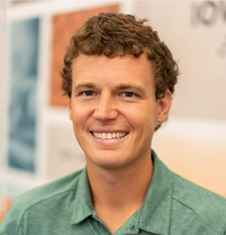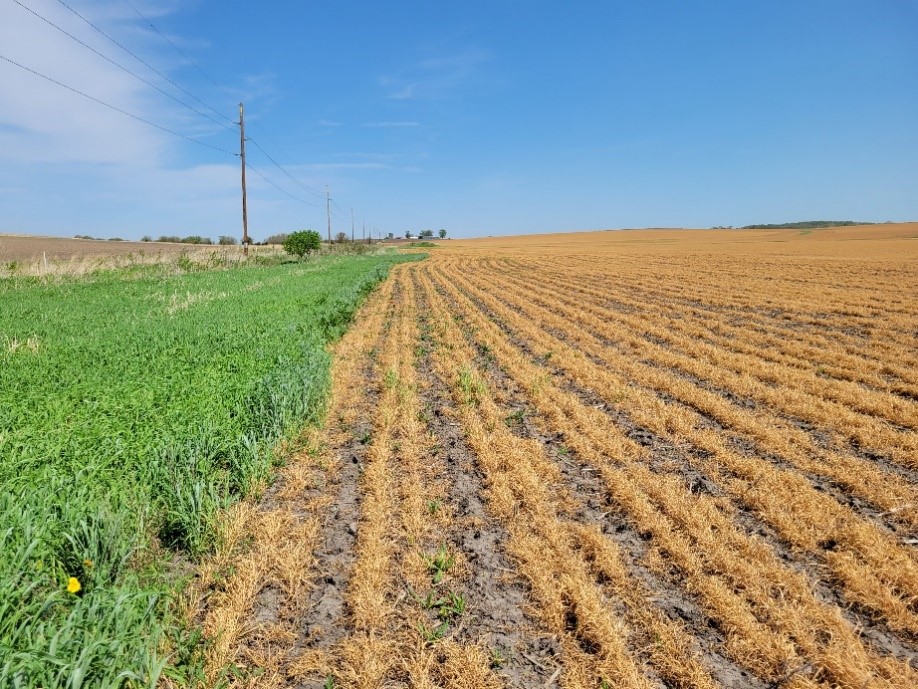Getting Started in Conservation
Mar 30, 2023

How Should I Get Started in Conservation?
By: Evan Brehm; Iowa Soybean Association
Conservation… Sustainability… Preserving… Sequestering… Often times these words are lumped together or used in place of one another. There are articles in every farm magazine or website out there discussing these interchangeable words. Then to add to the mix, there are acronyms and new emerging markets that can be confusing: EQIP, CSP, CRP, RCPP, carbon credits, bioreactors, ecosystem services, and many more! With all these opportunities and programs that have letters crammed together, farmers and landowners can become frustrated with not knowing where to start. Which can lead to discontinuing the search.By: Evan Brehm; Iowa Soybean Association
That is where Linn Coop and their partners can assist you in getting you started or finding other options to help your operation!
Cost share programs are an excellent approach to adding conservation to any farming operation. Cost share exists for cover crops, edge of field practices, nutrient management, and reducing tillage. The idea is to use cost share dollars to help off set costs by implementing these practices. This is achieved by going to your local NRCS county office to see what cost share is possible on your operation.
What are some of those cost share program acronyms?
- EQIP = Environmental Quality Incentives Program
- CSP = Conservation Stewardship Program
- RCPP = Regional Conservation Partnership Program
- CRP = Conservation Reserve Program
Each of these programs are similar in that they encourage conservation across the landscape with dollars available. However, they do differ depending on what a farmer or landowner could qualify for. This is where the conversation with the local NRCS staff will help guide the application process. The RCPP in the Middle Cedar Watershed is a new program that presents excellent cost share dollars. Linn Coop has a large presence in the Middle Cedar Watershed in Eastern Iowa. This provides tremendous opportunities for the customer base. Along with in field practices, there are edge of field practices that can be paid up to 100%. These edge of field practices are saturated buffers, denitrifying bioreactors, wetlands, and ox bows. All of the edge of field practices are aimed to reduce nitrates and phosphates in creeks, streams, and rivers.
Although cost share is a great starting point, I encourage farmers to continue these practices for more than just one year. Cover crops are a great example of a practice that can take a few years to see agronomic benefits. Over time cover crops can reduce weeds, make herbicides more effective, cycle nutrients, provide grazing opportunities, reduce soil erosion, sequester carbon, and improve soil and water health. Adding in a filter strip to the edge of the field or installing a saturated buffer/bioreactor can reduce nitrates by up to 50%. Along with cost share dollars, there are many agronomic and environmental benefits by adding conservation.
Carbon programs have been emerging all over the country. Typically, these programs require an additionality of cover crops and/or reducing tillage as a new practice. This will be a whole article in the future but know that this carbon market is an added income opportunity that you may qualify for. If a grower is adding cover crops for the first time on a farm, most likely that farm will qualify for a carbon program. Not all carbon programs are created equal. Pick the one that is right for your operation from a trusted resource.
If you have questions on where to start conservation for your acres, please reach out to a sales team member at Linn Coop or directly to Evan Brehm with the Iowa Soybean Association. We want to make your farm a success not just today but for the future generations. Do not get discouraged but be encouraged with a strong team to get you started. Conservation practices are going to keep our valuable soils in place, reduce nutrient runoff, open doors for other sources of income, and preserve the acres for generations to come. You’re not in this alone and we want to help you. Seek out the team and partners at Linn Coop to get conservation started or enhanced on your operation today.
Evan Brehm
319-310-5468
ebrehm@iasoybeans.com

Middle Cedar Watershed. Acres within this 10 county area spanning over 1.5 million acres can qualify for the Regional Conservation Partnership Program (RCPP).
 Saturated buffer along a creek. A strip tilled field with a cereal rye cover crop terminated prior to corn.
Saturated buffer along a creek. A strip tilled field with a cereal rye cover crop terminated prior to corn.